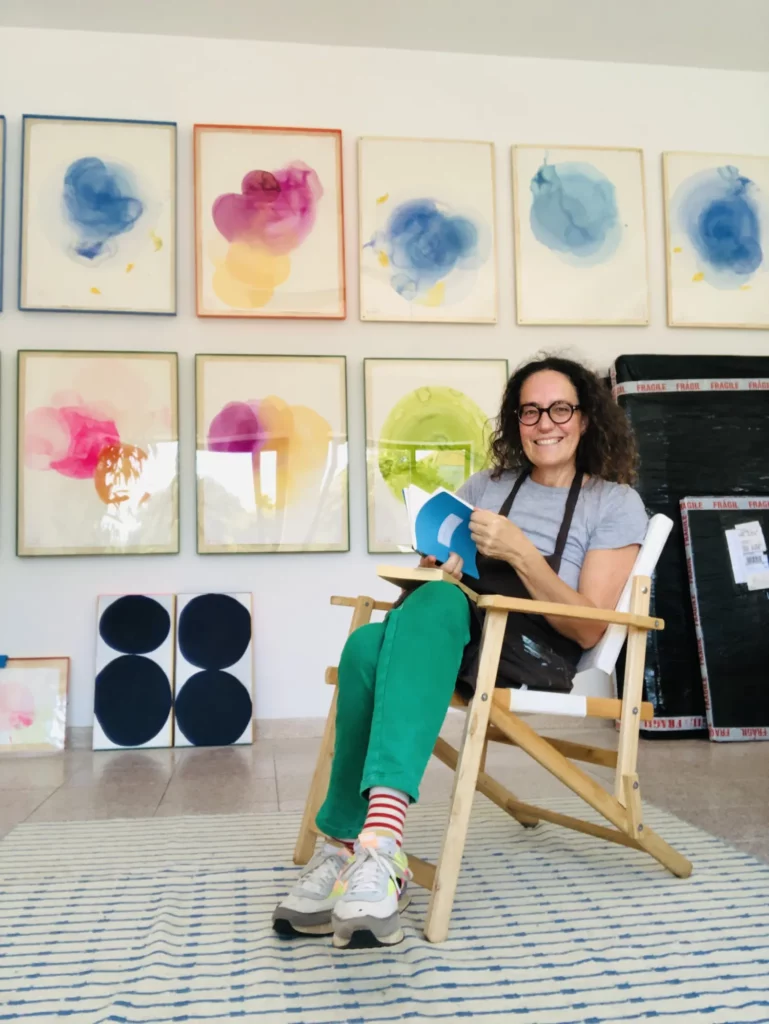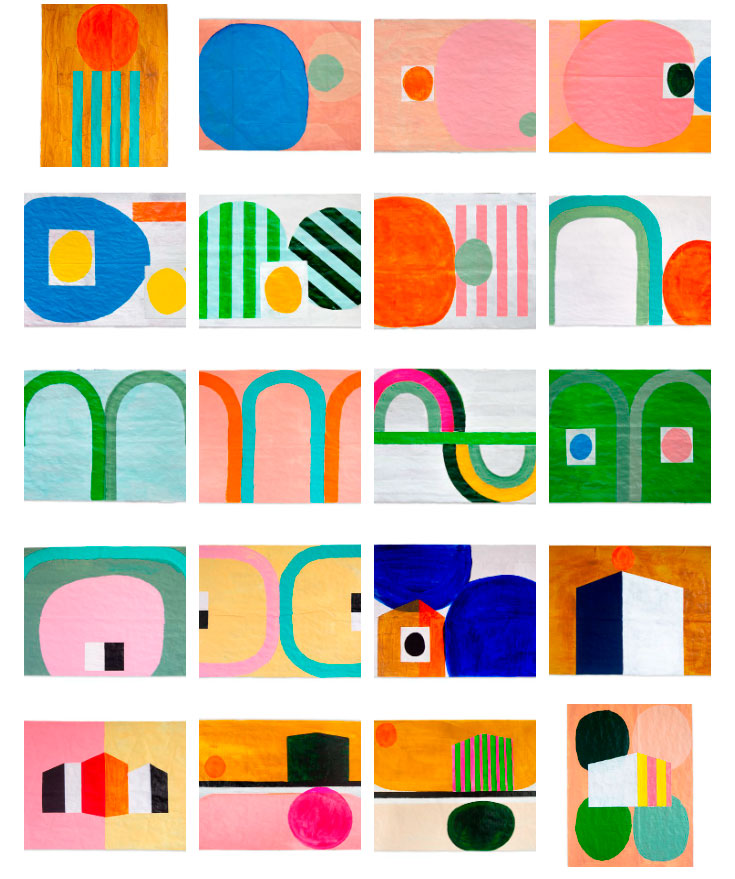
For over a decade, Martinhal has nurtured and supported talented Portuguese artists, providing them with a platform to showcase their work. Martinhal Residences, is located in the heart of Lisbon, in the Park of Nations a vibrant hub where art, culture, and innovation converge. It is a celebration of human achievement and a testament to the transformative power of creativity. Through continued collaboration with Portuguese artists, we want to not only create a vibrant living experience at Martinhal Residences but to create an ongoing conversation and capture the spirit of our colourful neighbourhood.
Introducing Graça Paz: Weaving Tales of the Sacred Lands and The Five Senses
At the heart of Martinhal Residences lies the captivating work of Graça Paz, an artist hailing from Porto, Portugal, with a profound connection to her musical roots. Graça’s artistic journey began with a passion for fashion design, but her heart always sought the beauty of abstracts. Her art, a splendid blend of geometric abstraction and fluid watercolours, textile designs, and vibrant acrylics, weaves stories that resonate with emotions and human experiences.
Within the Residences, “Lugares – The Sacred Lands” and “The Five Senses,” crafted by Graça Paz, stand as testaments to the sanctity of space and the beauty of human perception. “Lugares” tells a timeless tale of cherished places transformed by families over generations, while “The Five Senses” invites us on a captivating multisensory journey, translated to bold, colourful and uplifting geometries.
Tell us a bit about your journey of becoming an artist?
I like to think that we are all born with a toolkit that allows us not only to survive in this life, but to enjoy it. Often, we don’t even use it.
I have no memory of not being an artist. All my childhood, adolescence, young adulthood… mother, mature woman, always had a house full of paint. The table in the kitchen and in the living room was always full of drawings and children, sometimes in my lap, sometimes drawing….the walls and closet doors were often my laboratory and my children’s art galleries, mixing our drawings with paintings of renowned artists that we had inherited from my mother-in-law.
Becoming an artist with the responsibility of my role happened in 2018 when I visited Brancusi’s studio in Paris and realized that art is divinity and a point of union with a huge responsibility , where there are no colors, races, religions, rich or poor. I realized in a matter of seconds that art was a temple for peace and from there, yes, I became an Artist. Until then, the stories were shortcuts to get to that place.
For those who aren’t familiar with your work how do you describe it?
I think I would describe it this way…A work with a resilient strategy, with an important relationship with color, humble materials, paper, card, cloth, and the transformation of alternative materials, with the heritage of embroidery as a female memory passed down through family generations.
With a focus on exalting the beauty of the imperfect as an irreproachable mark of not making life too serious. In the end I’d say it’s geometric but not always; very intuitive.
What was your starting point for the – ‘Lugares – Sacred Lands ‘& ‘The Five Senses’ pieces in Martinhal Residences?
Certainly, my starting point was meeting Chitra and Roman and feeling them as faithful custodians of places that they transform with a concept really dedicated to the idea of family. This is what I call the Sacredness.
Then I went to visit when work was underway at Martinhal Residences and feel the history that the land emanated. That said, I’m going to the previous question adding that I define my work as very intuitive…
Interestingly, with all that information inside me, I was missing a title that came, when in a conversation with my eldest son who lives in San Francisco, we realized that on the neighbor’s roof it was written in pink, Sacred Lands! Then I knew I had my name, and I could start working.

There is sense a vibrancy and joy to the artwork – how important is the role of artwork in the spaces we inhabit?
For me, and from me to others, it is service. I know the impact it has on the lives of many families, although sometimes its purpose is initially decorative, but I know that it resonates in people’s lives daily. It is a place of contemplation and stillness in the hustle and bustle of a day.
It’s my way of expressing the joy I feel in living, thanks to having taken steps that got me out of unhappy situations. It is a manifesto to courage.
Finally, how do you see the future of Portuguese art on a global stage?
Honestly, I can only talk about my experience based on my personal path! I think that the artist (Portuguese or worldwide) has to gain certain aptitudes or wake up to them. You have to put an end to the scarcity myth that runs through your veins (which comes from the history of fear in the world) and know how to communicate it, know how to sell it, know how to manage it. Becoming enough to then be able to give your share to the community, before delegating or being forgotten in the collections.
I think that the moment art faculties, and not just art faculties, include these assets, the future of Portuguese art becomes more democratized and a tool that represents its country, in a less elitist way. The moment everyone does what they have to do without comparisons and criticism, art expands. Because actually there is a huge admiration for the artist.
Finally, I think that global art is like any other job where we must present ourselves every day, have discipline and method, and learn with each experience to honor our value without looking and comparing ourselves with other artists’ stories. Each of us has a place in the art world.
*Selected works from artist Graça Paz are available for purchase via our Penthouse Collection art curating service.
Contact